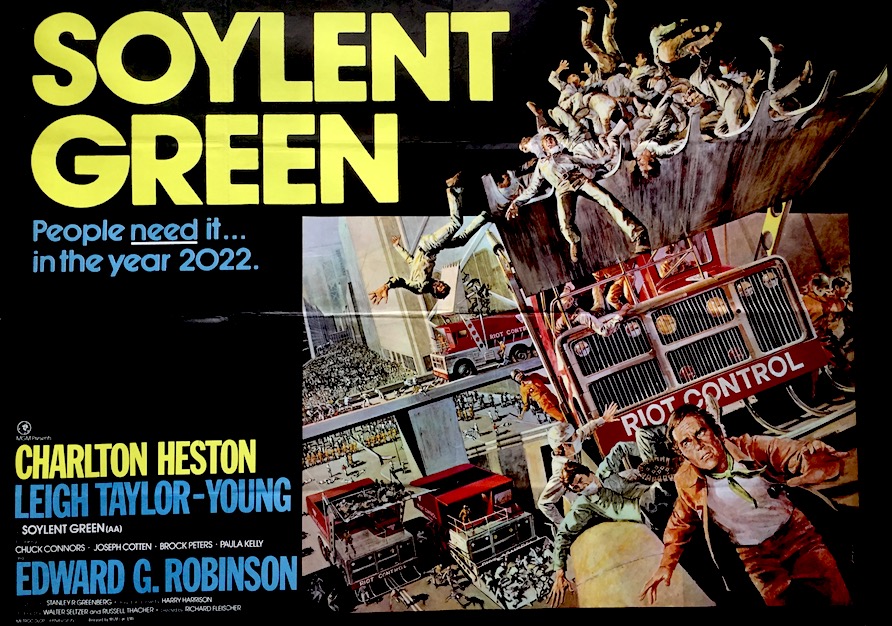It’s 2022 (in case you didn’t get the memo about it), and we’ve now reached the future—at least the future as seen through the dystopian lens of the 1973 sci-fi feature film Soylent Green.

Based on the 1966 novel Make Room! Make Room! by Harry Harrison and starring Charlton Heston (Planet of the Apes, The Omega Man), Edward G. Robinson (in his final film role), and Leigh Taylor-Young, Soylent Green starts out as a police procedural, with Heston’s character, New York detective Frank Thorn, investigating the murder of an executive at Soylent Industries, the company responsible for Soylent Green, the main source of food in a critically overpopulated world—there are 40 million people living in New York City alone! (NYC’s current population is around 8 million.)
In Make Room! Make Room!, soylent is made from a combination of soy and lentil, but in Soylent Green, the foodstuff is made from…well, that’s the shocker Thorn encounters during his investigation that’s made the film so memorable for close to 50 years. If you’ve never seen Soylent Green before, give it a look. Its final twist should appeal to horror fans, and its dystopian vibe is pure 1970s we’re-all-doomed mind-set—society has collapsed, or is soon to collapse, and life on Earth is a hellscape.
From the 1980s onward, that approach became pure entertainment—The Terminator, Escape from New York, Night of the Comet, The Hunger Games—but in the post-Woodstock, post–flower child 1970s, there was a firm belief that humanity really was headed down that path of ultimate self-destruction, and that attitude was reflected in a slew of movies: The Omega Man, Logan’s Run, A Clockwork Orange, Silent Running, The Late, Great Planet Earth, No Blade of Grass, and Damnation Alley, just to name a few. And Soylent Green, of course. Overpopulation, starvation, poverty, environmental concerns, the world always on the brink of war…
Huh. Nothing’s really changed all that much, has it? Only it’s not just on the movie screen.
So, welcome to the future, ’Warpnauts—now what’s for dinner?






